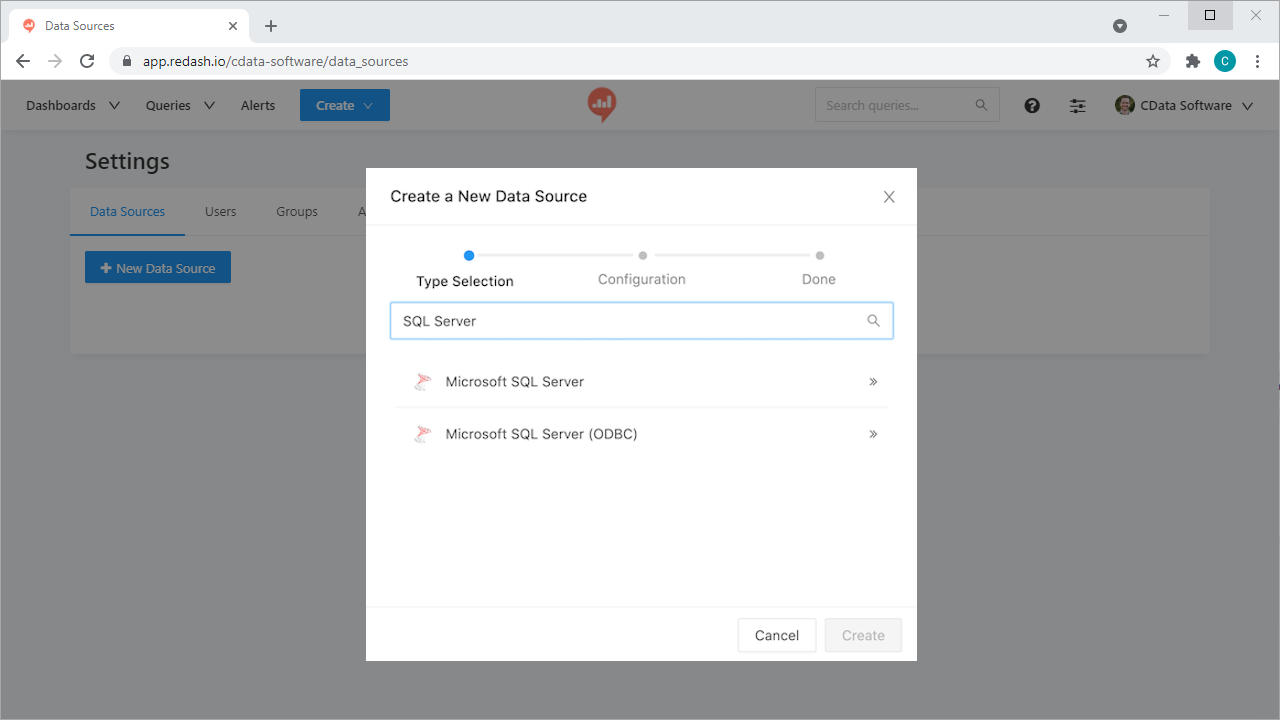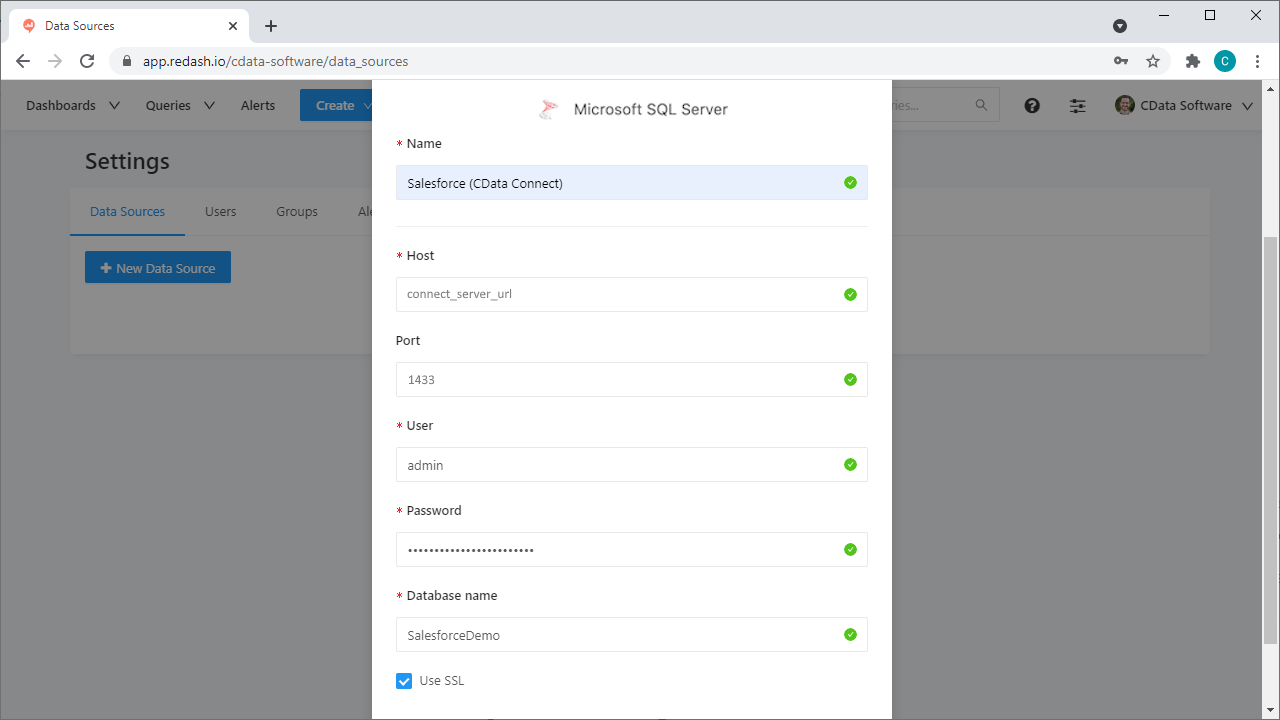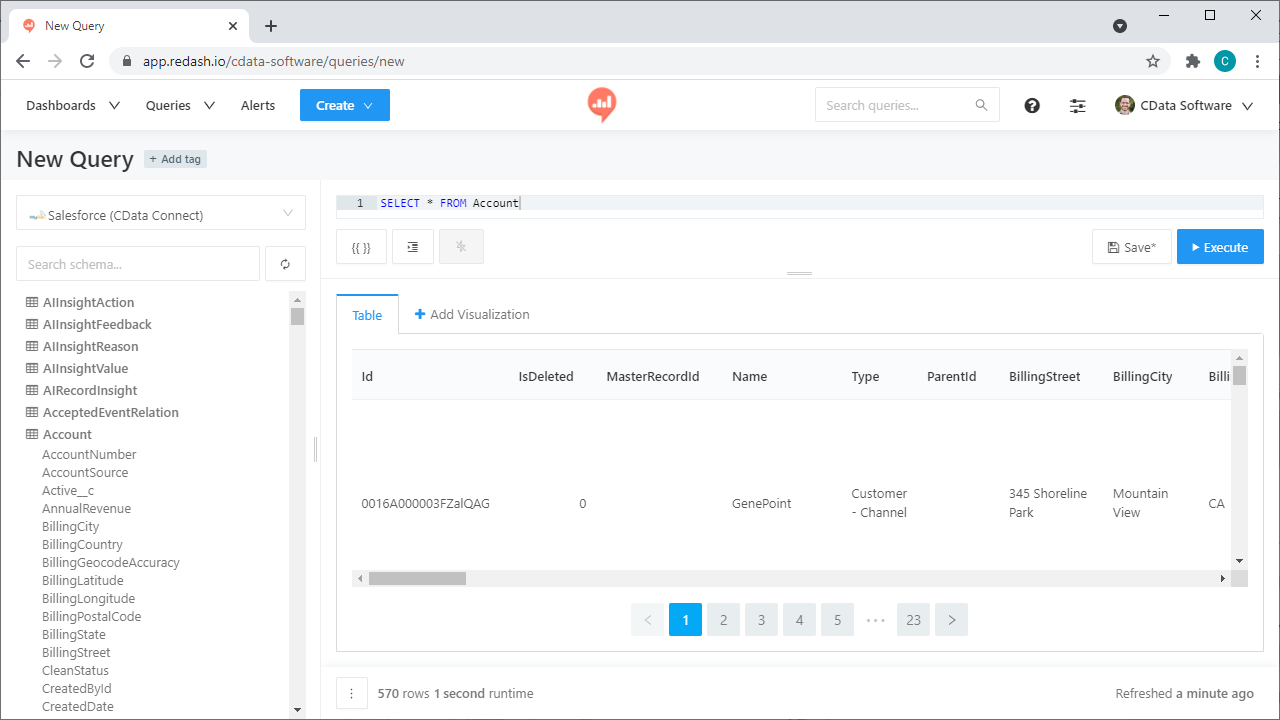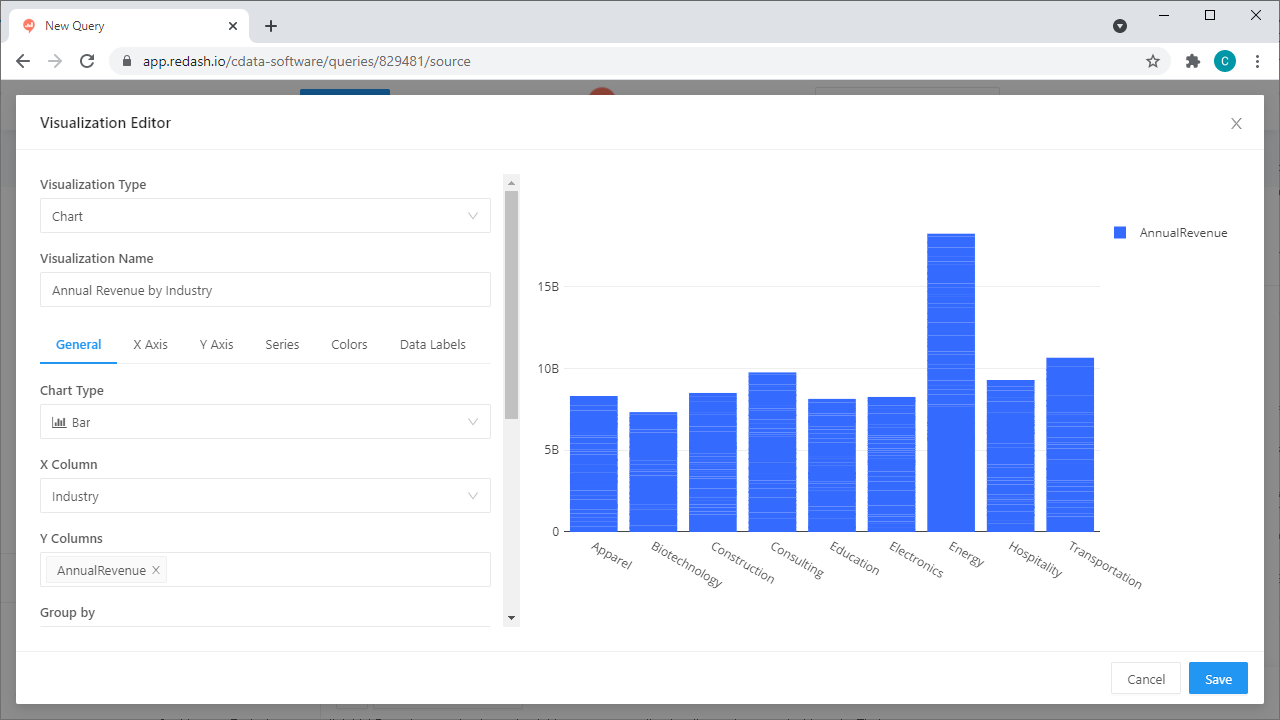Discover how a bimodal integration strategy can address the major data management challenges facing your organization today.
Get the Report →Build Kintone-Connected Dashboards in Redash
Use CData Connect Server to create a virtual SQL Server Database for Kintone data and build visualizations and dashbaords from Kintone data in Redash.
Redash lets you connect and query your data sources, build dashboards to visualize data and share them with your company. When paired with CData Connect Server, you get instant, cloud-to-cloud access to Kintone data for visualizations, dashboards, and more. This article shows how to create a virtual database for Kintone and build visualizations from Kintone data in Redash.
CData Connect Server provides a pure SQL Server interface for Kintone, allowing you to easily build reports from live Kintone data in Redash — without replicating the data to a natively supported database. As you build visualizations, Redash generates SQL queries to gather data. Using optimized data processing out of the box, CData Connect Server pushes all supported SQL operations (filters, JOINs, etc) directly to Kintone, leveraging server-side processing to quickly return the requested Kintone data.
Create a Virtual SQL Server Database for Kintone Data
CData Connect Server uses a straightforward, point-and-click interface to connect to data sources and generate APIs.
-
Login to Connect Server and click Connections.
![Adding a connection]()
- Select "Kintone" from Available Data Sources.
-
Enter the necessary authentication properties to connect to Kintone.
In addition to the authentication values, set the following parameters to connect to and retrieve data from Kintone:
- Url: The URL of your account.
- GuestSpaceId: Optional. Set this when using a guest space.
Authenticating with Kintone
Kintone supports the following authentication methods.
Using Password Authentication
You must set the following to authenticate:
- User: The username of your account.
- Password: The password of your account.
Using Basic Authentication
If the basic authentication security feature is set on the domain, supply the additional login credentials with BasicAuthUser and BasicAuthPassword. Basic authentication requires these credentials in addition to User and Password.
Using Client SSL
Instead of basic authentication, you can specify a client certificate to authenticate. Set SSLClientCert, SSLClientCertType, SSLClientCertSubject, and SSLClientCertPassword. Additionally, set User and Password to your login credentials.
![Configuring a connection (SQL Server is shown).]()
- Click Save Changes
- Click Privileges -> Add and add the new user (or an existing user) with the appropriate permissions.
With the virtual database created, you are ready to connect to Kintone data from Redash.
Visualize Kintone Data in Redash
The steps below outline creating a new data source in Redash based on the virtual Kintone database in Connect Server and building a simple visualization from the data.
Create a New Data Source
- Log into Redash, click on your profile and click "Data Sources"
- Click the " New Data Source" button
- Select "Microsoft SQL Server" as the Data Source Type
![Creating a new Data Source.]()
- On the configuration tab, set the following properties:
- Name: Name the data source (e.g. Kintone (CData Connect))
- Host: The full URL to your CData Connect instance (e.g. https://connect_server_url)
- Port: The port of the CData Connect SQL Server endpoint (e.g. 1433)
- User: A CData Connect user
- Password: The password for the above user
- Database name: The name of the virtual database for Kintone (e.g. Kintone1)
- Click the checkbox to Use SSQL
![Configuring the new Data Source.]()
- Click Create
- Click the "Test Connection" button to ensure you have configured the connection properly
With the new Data Source created, we are ready to visualize our Kintone data.
Create a Kintone Data Visualization
- Click Create -> New Query
- Select the newly created Data Source (you can explore the data structure in the New Query wizard)
- Write a SQL statement to retrieve the data, for example:
SELECT CreatorName, Text FROM Comments WHERE AppId = '1354841' - Click the "Execute" button to load Kintone data into Redash via CData Connect
![Loading Kintone data into Redash]()
- Use the Visualization Editor to create and analyze graphs from Kintone data
![Choosing a Database and Tables]()
- You can schedule the query to refresh and update the visualization periodically
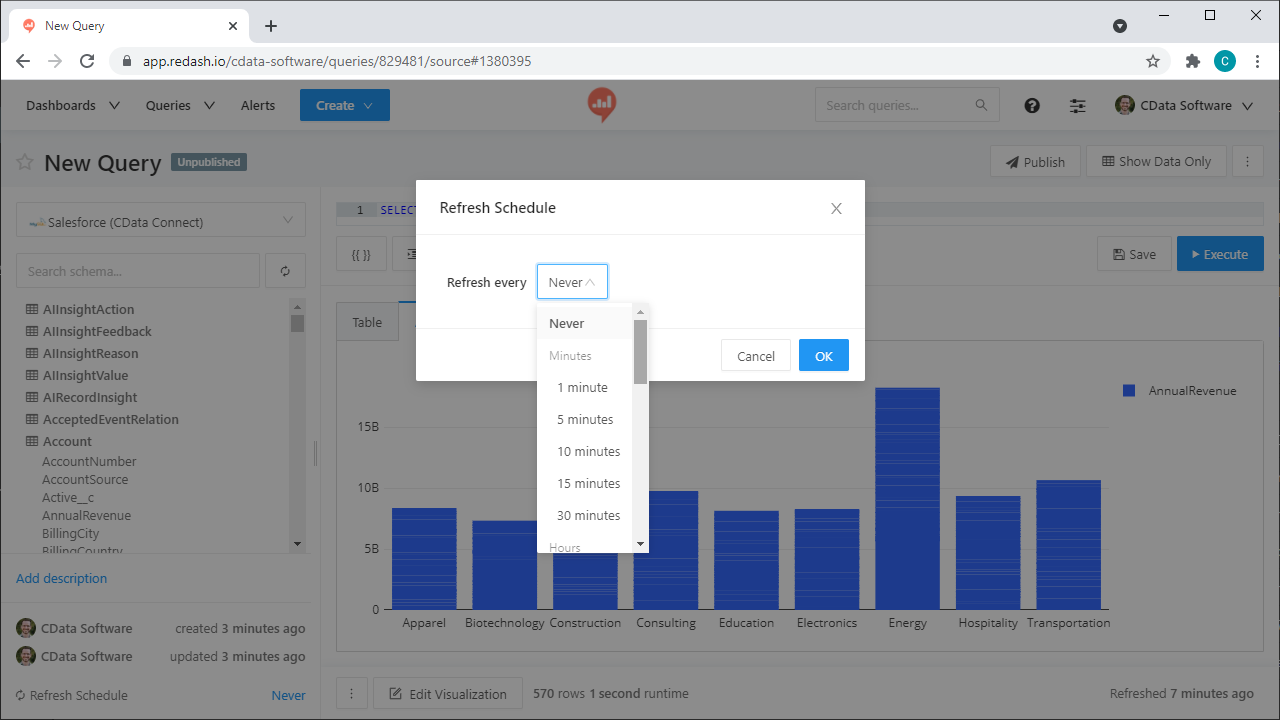
SQL Access to Kintone Data from Cloud Applications
At this point, you have a direct, cloud-to-cloud connection to Kintone data from Redash. You can create new visualizations, build dashboards, and more. For more information on gaining SQL access to data from more than 100 SaaS, Big Data, and NoSQL sources from cloud applications like Redash, refer to our Connect Server page.








